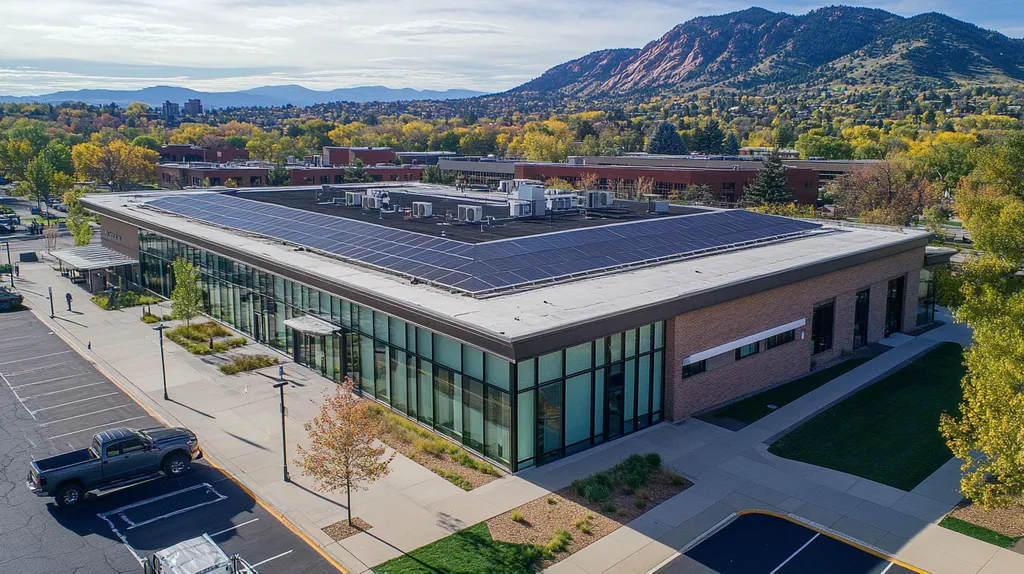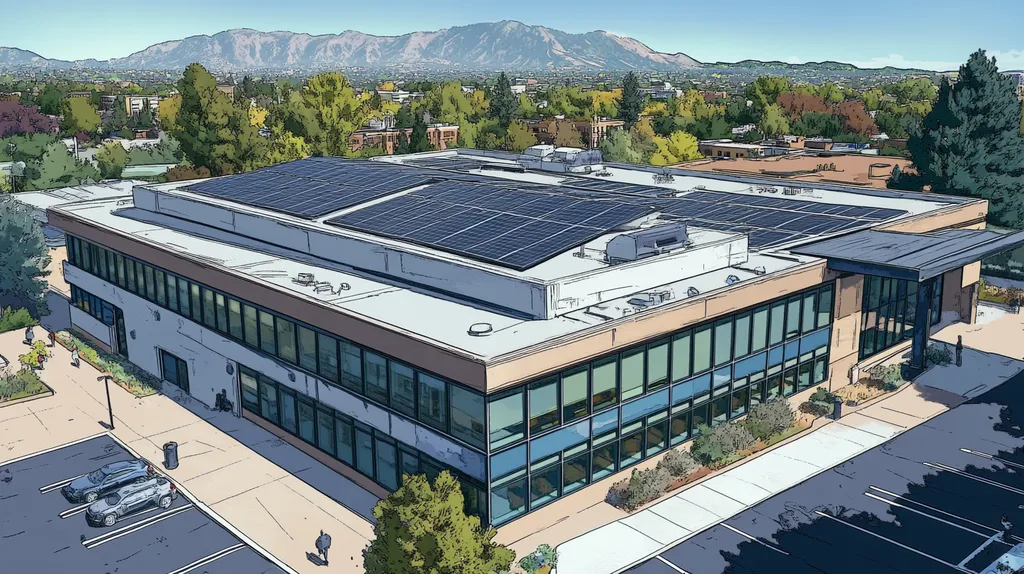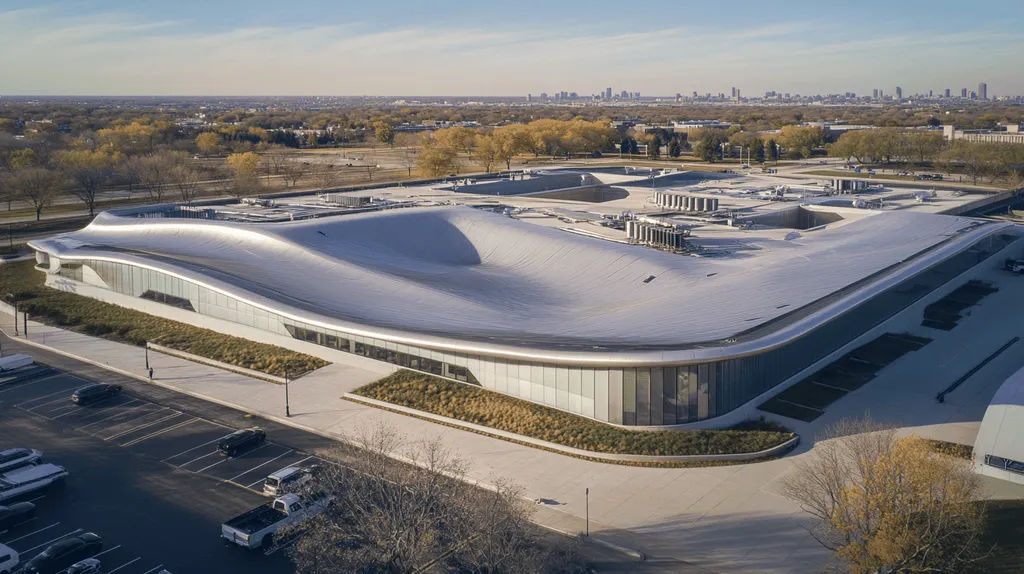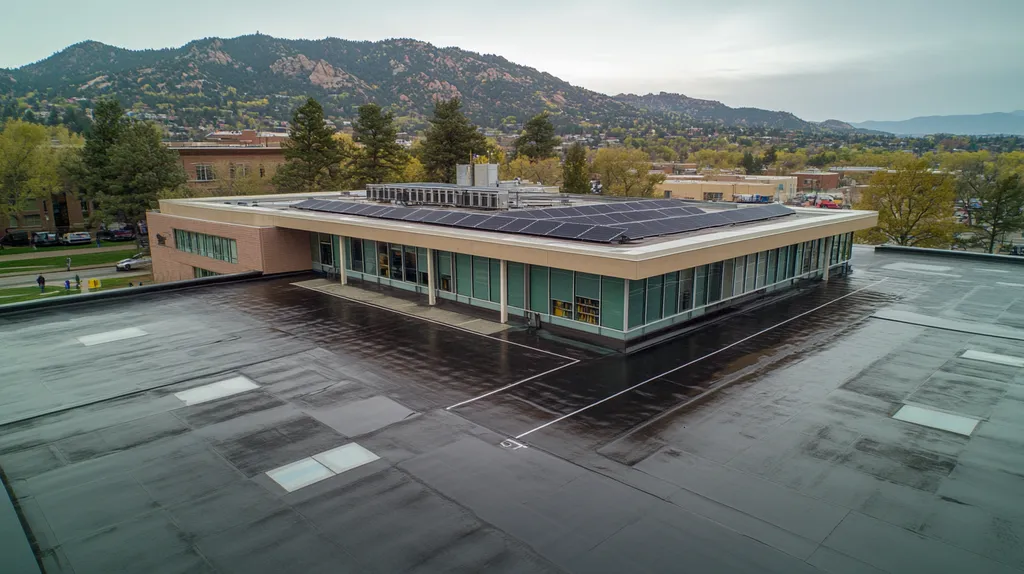Welcome to today’s Battle Royale featuring two roofing heavyweights: “TPO” in the east corner versus “EPDM” in the west!
Tonight’s showdown pits these contenders against each other across six punishing rounds designed to test every aspect of their performance for recycling materials from old commercial roofs.
At stake? Millions in potential costs, decades of building protection, and the critical performance demands of modern commercial and industrial facilities.
Our professional judging panel will evaluate each round on technical merit, real-world performance, and value delivery. After all six rounds, we’ll declare our ultimate champion.
Ladies and gentlemen, facility managers and building owners… it’s time to rumble!
ROUND 1: INITIAL COSTS & INSTALLATION
When considering commercial roofing materials, the initial investment and installation process can make or break a project’s success. With over 12 million tons of roofing waste generated annually in the US, choosing between TPO and EPDM impacts both immediate costs and future recycling potential. Understanding these factors helps property owners make environmentally responsible decisions while managing budgets effectively.
Material Expenses
TPO materials typically cost $3-5 per square foot, making them an attractive option for budget-conscious projects. The material’s lightweight nature also reduces structural requirements and associated costs.
EPDM materials range from $4-8 per square foot, with costs varying based on membrane thickness. While initially more expensive, EPDM contains fewer chemical additives, potentially simplifying future recycling efforts.
Asphalt-based materials like EPDM face significant recycling challenges due to contamination from nails, wood, and other debris, adding to long-term disposal costs. (source: Factor Roofing)
For material expenses, TPO claims the ‘ADVANTAGE’ due to lower upfront costs despite both options facing recycling challenges.
Installation Complexity
TPO installation utilizes heat-welded seams and mechanical fastening, requiring specialized equipment but offering consistent results. The process is systematic and predictable, allowing for efficient project planning.
EPDM installation involves adhesive application and careful seam creation, demanding more manual labor and expertise. Weather conditions can significantly impact installation time due to adhesive curing requirements.
Given its more straightforward installation process, TPO earns the ‘ADVANTAGE’ in this category.
Project Timeline
TPO installations typically complete within 5-7 working days for average commercial projects. The heat-welded seams cure immediately, allowing for faster project completion.
EPDM projects often require 7-10 working days due to adhesive curing times and more labor-intensive seaming processes. Weather conditions can extend this timeline further.
TPO gains the ‘ADVANTAGE’ for project timeline efficiency.
ROUND 1 WINNER: TPO
ROUND 2: DURABILITY & LIFESPAN
When evaluating commercial roofing systems, durability and lifespan directly impact both environmental sustainability and long-term cost effectiveness. With commercial roofing replacements generating significant waste and disruption, understanding how TPO and EPDM perform over time becomes crucial for responsible facility management.
Material Resilience
TPO membranes exhibit exceptional resistance to UV radiation and chemical exposure, maintaining their structural integrity even in harsh environments. Their heat-welded seams create a monolithic surface that resists separation and water infiltration.
EPDM’s natural rubber composition provides superior flexibility and excellent resistance to extreme temperature fluctuations. However, its seam adhesion can deteriorate over time, requiring more frequent maintenance and potential repairs.
TPO’s advanced material science and superior seam strength earn it the ‘ADVANTAGE’ in resilience.
Lifespan Expectations
TPO roofing systems have demonstrated lifespans of 20-30 years when properly installed and maintained. Carlisle SynTec Systems has successfully recycled over 270,000 tons of roofing materials through their Rooftop Recycling Program, showing that both TPO and EPDM can be effectively diverted from landfills at end-of-life. (source: Carlisle SynTec Systems)
EPDM systems typically last 25-35 years, with some installations exceeding 40 years when properly maintained. This extended lifespan can significantly reduce waste generation and replacement frequency.
Given EPDM’s longer proven track record, it claims the ‘ADVANTAGE’ in lifespan expectations.
Maintenance Requirements
TPO roofs require minimal routine maintenance beyond bi-annual inspections and basic cleaning. Their smooth surface resists dirt accumulation and biological growth, simplifying upkeep procedures.
EPDM systems demand more frequent inspections, particularly of seams and flashings. Their surface texture can trap debris and may require more intensive cleaning to maintain optimal performance.
TPO’s lower maintenance demands secure the ‘ADVANTAGE’ in this category.
ROUND 2 WINNER: TPO
ROUND 3: PERFORMANCE FACTORS
Modern commercial roofing faces unprecedented challenges from extreme weather events, rising energy costs, and growing environmental regulations. With commercial buildings accounting for nearly 35% of urban energy consumption, roofing performance directly impacts both operational costs and environmental footprint. Understanding how TPO and EPDM perform across key metrics helps facility managers make decisions that balance immediate needs with long-term sustainability.
Energy Efficiency
TPO’s highly reflective white surface delivers superior solar reflectance, reducing cooling costs by up to 30% in warm climates. Its heat-welded seams also prevent air leakage, maintaining consistent indoor temperatures.
EPDM’s dark surface absorbs more solar radiation, potentially increasing cooling demands in warm regions. However, this same property proves beneficial in colder climates by helping reduce heating costs.
While both materials offer strong insulation properties, TPO’s reflective capabilities give it the ‘ADVANTAGE’ in overall energy efficiency.
Weather Resistance
TPO demonstrates excellent resistance to UV radiation, ozone exposure, and chemical damage. Its reinforced membrane construction provides superior puncture resistance and dimensional stability.
EPDM shows remarkable flexibility in extreme temperatures and maintains its elasticity over decades. However, its adhesive-based seams may require more frequent maintenance compared to TPO’s heat-welded joints.
For overall weather resistance, TPO claims the ‘ADVANTAGE’ due to its superior seam strength and chemical resistance.
Environmental Impact
The disposal of roofing materials poses significant environmental challenges, with traditional materials taking centuries to decompose while leaching chemicals into groundwater. Proper material selection and disposal planning have become crucial for responsible facility management. (source: JobNimbus)
TPO membranes are fully recyclable at end-of-life and contribute to reducing urban heat island effects through their reflective properties. Their lighter weight also reduces transportation emissions during installation and removal.
EPDM, while durable, presents more significant recycling challenges and can contribute to urban heat island effects due to its dark coloring. However, its longer lifespan helps offset some environmental impacts through reduced replacement frequency.
TPO earns the ‘ADVANTAGE’ in environmental impact due to its recyclability and heat-reduction properties.
ROUND 3 WINNER: TPO
ROUND 4: MAINTENANCE REQUIREMENTS
Commercial roofing maintenance directly impacts both operational costs and environmental sustainability. With replacement costs averaging $10-15 per square foot, proper maintenance can extend roof life by 25% or more while ensuring recyclability at end-of-life. Understanding the maintenance demands of TPO and EPDM helps facility managers optimize their roof’s performance while preparing for eventual recycling.
Preventive Maintenance
TPO roofs require bi-annual professional inspections focusing on seam integrity and surface degradation. Their smooth surface facilitates easier debris removal and cleaning, reducing maintenance labor costs.
Regular washing helps maintain TPO’s reflective properties, though harsh cleaning chemicals must be avoided to preserve recyclability. Seam inspections are crucial as heat-welded joints can develop issues in extreme temperature cycles.
EPDM systems demand quarterly inspections, particularly of adhesive-based seams and flashings. Their textured surface tends to accumulate more debris, requiring more frequent cleaning interventions.
TPO claims the ‘ADVANTAGE’ in preventive maintenance due to simpler cleaning requirements.
Repair Procedures
TPO repairs must be performed by qualified professionals using specialized heat-welding equipment. Small tears or punctures require precise temperature control to maintain membrane integrity and future recyclability.
EPDM repairs can often be completed using adhesive-based patches and sealants. This flexibility allows for faster repairs and lower maintenance costs over time.
Given its simpler repair requirements and lower technical demands, EPDM earns the ‘ADVANTAGE’ in repair procedures.
Long-term Care Requirements
TPO membranes can be easily recycled at end-of-life, with panels ground into small pieces for use in new roofing materials or other building products. This recyclability depends on proper maintenance throughout the roof’s lifespan to prevent contamination. (source: Roofing Solutions)
EPDM systems demonstrate exceptional durability with minimal long-term care requirements. Their chemical stability and resistance to environmental factors result in fewer maintenance interventions over time.
EPDM’s proven track record of reduced long-term maintenance needs earns it the ‘ADVANTAGE’ in this category.
ROUND 4 WINNER: EPDM
ROUND 5: SUSTAINABILITY CREDENTIALS
With landfills reaching capacity and environmental regulations tightening, commercial roofing’s sustainability impact has become a critical business consideration. The roofing industry generates over 13 million tons of waste annually, making material recyclability and environmental performance key factors in roofing decisions.
Understanding how TPO and EPDM materials contribute to or detract from sustainability goals helps facility managers make choices that align with both environmental responsibilities and business objectives.
Material Recovery Potential
TPO membranes offer excellent recycling potential due to their thermoplastic nature. The material can be melted down and reprocessed into new roofing products or other construction materials, creating a closed-loop system.
The clean separation of TPO from other roofing components during removal requires specialized techniques but results in higher-quality recycled material. This process often offsets disposal costs through material recovery value.
EPDM membranes require separation from other materials during roof removal, significantly influencing labor costs and project timelines. While technically recyclable, the process demands more complex handling procedures. (source: Sheffield Metals)
TPO claims the ‘ADVANTAGE’ in material recovery potential due to its simpler recycling process.
Environmental Performance
TPO’s reflective surface reduces building cooling loads and helps combat urban heat island effects. This characteristic directly contributes to lower energy consumption and reduced carbon emissions throughout the building’s lifecycle.
The manufacturing process for TPO incorporates recycled materials and produces minimal waste, further enhancing its environmental credentials. Modern TPO formulations also eliminate harmful plasticizers and chemicals of concern.
EPDM production requires more energy-intensive processes and petroleum-based raw materials. While durable, its dark surface typically increases cooling energy demands unless specially treated with reflective coatings.
TPO earns the ‘ADVANTAGE’ for superior environmental performance.
End-of-Life Management
TPO’s end-of-life options include complete material recycling, reducing landfill impact and supporting circular economy principles. The material’s chemical stability ensures it remains recyclable even after decades of service.
Dedicated TPO recycling programs have emerged nationwide, making responsible disposal increasingly accessible and cost-effective. These programs often provide documentation for green building certification requirements.
EPDM faces more limited end-of-life options, with most material still ending up in landfills. While some recycling programs exist, they are less widespread and often more expensive than TPO recycling alternatives.
TPO secures the ‘ADVANTAGE’ in end-of-life management options.
ROUND 5 WINNER: TPO
ROUND 6: SPECIALIZED APPLICATIONS
Commercial roofing applications increasingly demand specialized solutions for unique environmental challenges and regulatory requirements. As building codes evolve and sustainability goals become more stringent, the choice between TPO and EPDM can significantly impact both immediate performance and long-term recyclability potential.
Roofing materials contribute substantially to construction waste, making up nearly 20% of landfill construction and demolition waste. This reality demands careful consideration of specialized applications that maximize material recovery and minimize environmental impact. (source: Simon Roofing)
Solar Integration Compatibility
TPO’s reflective surface and heat-welded seams provide an ideal foundation for solar panel installations. The material’s dimensional stability prevents warping or shifting that could compromise panel mounting systems.
The smooth surface allows for simplified ballasted solar installations while maintaining the membrane’s recyclability. TPO’s chemical resistance also protects against potential degradation from panel-related components.
EPDM requires additional reinforcement and protection layers for solar installations, potentially complicating future recycling efforts. Its darker surface can also increase ambient temperatures around solar panels, reducing their efficiency.
TPO claims the ‘ADVANTAGE’ for solar integration compatibility.
Green Roof Applications
TPO membranes excel in green roof installations due to their superior puncture resistance and root barrier properties. The material’s chemical composition remains stable even when exposed to constant moisture and organic matter.
Heat-welded seams provide superior protection against water infiltration, critical for green roof success. The material’s recyclability remains unaffected by vegetation-related exposures.
EPDM offers excellent elongation properties beneficial for green roof movement but requires additional root barrier layers. These layers can complicate eventual recycling processes and increase installation complexity.
TPO earns the ‘ADVANTAGE’ in green roof applications.
Cold Storage Facilities
TPO’s superior resistance to thermal shock makes it ideal for cold storage applications. The material maintains flexibility and seam integrity despite extreme temperature differentials.
The bright surface reduces cooling loads while its recyclable composition supports sustainability goals. Installation techniques remain consistent regardless of temperature requirements.
EPDM performs well in cold environments but requires specialized adhesives for proper installation. These additional components can impact the material’s recyclability at end-of-life.
TPO secures the ‘ADVANTAGE’ for cold storage applications.
ROUND 6 WINNER: TPO
AND THE WINNER IS…
After six grueling rounds of technical evaluation, we have our verdict…
In a decisive victory, taking five of six rounds, TPO emerges as our heavyweight champion of commercial roof recycling materials!
TPO dominated with superior performance in initial costs, material resilience, energy efficiency, and – crucially – end-of-life recyclability. Its reflective surface, heat-welded seams, and simplified maintenance requirements delivered knockout blows across multiple categories.
But don’t count EPDM out completely! This veteran contender proved its worth in the maintenance round, showing particular strength in repair procedures and long-term durability. For buildings in colder climates or where frequent repairs may be needed, EPDM remains a formidable challenger.
However, every building represents its own unique match-up. Local climate conditions, structural requirements, and specific property characteristics can significantly influence material performance. While this analysis provides general guidance, it cannot account for all variables. Property owners should always consult with qualified roofing professionals who can evaluate their specific situation.
Ladies and gentlemen, in the high-stakes arena of commercial roofing, remember: The true champion isn’t the material with the most general victories – it’s the one that best meets your building’s specific needs and environmental goals. Choose your contender wisely!
FREQUENTLY ASKED QUESTIONS
Q. What are the initial costs of a commercial roof using TPO or EPDM?
A. TPO materials cost around $3-5 per square foot, making them budget-friendly. EPDM materials range from $4-8 per square foot but may have recycling advantages despite higher initial costs.
Q. How do the durability and lifespan of commercial roofs compare?
A. TPO typically lasts 20-30 years, while EPDM can last 25-35 years. Both materials’ performance over time highlights the importance of longevity in waste management and operational costs.
Q. What are the performance factors for TPO and EPDM commercial roofs?
A. TPO excels in energy efficiency and weather resistance, preventing air leakage. Conversely, EPDM offers flexibility but may require additional maintenance to address seam deterioration over time.
Q. How important is maintenance for commercial roofing systems?
A. Regular maintenance is crucial as it extends roof life and ensures recyclability. TPO typically requires less frequent interventions, while EPDM requires detailed inspections more often.
Q. How do TPO and EPDM score on sustainability credentials?
A. TPO has a superior recycling process and lesser landfill impact, while EPDM faces limited end-of-life options. Proper choices directly affect sustainability goals for facility managers.
Q. What specialized applications are feasible for TPO and EPDM roofs?
A. TPO is ideal for solar integration and green roofs due to its stability. EPDM can also be used but requires additional layers, potentially complicating recycling and installation.
Q. How can I maximize the recyclability of my commercial roof?
A. Proper installation and maintenance of TPO roofs enhance recyclability. Ensure professional inspections and use appropriate cleaning methods to prevent contamination that could hinder recycling efforts.










